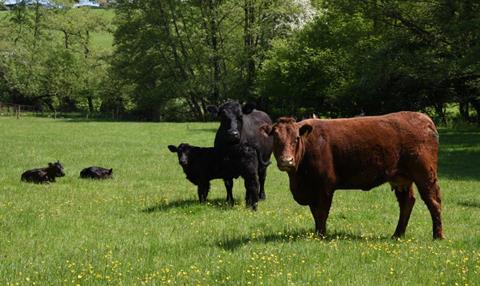A new report conducted by Hybu Cig Cymru – Meat Promotion Wales (HCC) has highlighted the importance of beef supply, as well as demand, when forecasting the future of the sector.

Domestic supplies of beef have been tight during the last 12 months, with the size of the GB herd decreasing for the second consecutive year. Industry figures suggest that this is likely to continue in the short term; the number of cattle under 30 months of age is relatively stable on the year, but has dropped by 1.4% since 2019.
In contrast, BCMS figures indicate that cattle aged under 12 months are up 1% since last year. This will inevitably lead to a greater supply in the future.
Whilst supply is a key factor, the in-depth report also sheds light on a number of other complex external factors that could drastically change the outlook in the long-term. These vary from post-Brexit changes in trade patterns and the Covid-19 pandemic to consumer influences and worldwide trends.
This work forms part of HCC’s market analysis remit, led by data analyst Glesni Phillips. She said: “Two years ago, there was serious concern within the industry about low farmgate prices. An increased domestic supply and trading patterns put pressure on farmgate prices, combined with subdued consumer confidence and demand due to Brexit.
“Since then, some hope was restored with the outcome of the Brexit deal. In addition, the pandemic, combined with successful marketing campaigns, has led to strong sales of beef to consumers across the country and firm farmgate prices for prime and cull cattle.
“The peak deadweight price for steers reached an average of 372.0p/kg by the end of November 2020, which was almost 30p higher than the five-year average. Five months later, in April 2021, store cattle prices in England and Wales hit a milestone of £4 per kilo – the highest on record in a while.”
The beef sector has seen a gradual decline in cattle numbers for many years. On 1st April 2021, there were 7.77 million head of cattle on the ground in Great Britain. This is a significant drop of 2.7%, or 217,100 head, since the same period in 2019.
Glesni Phillips added. “As a result, the numbers sent to slaughter across the UK also fell by 3.5%, or 1.1 million head, between January and May 2021 compared to last year. This is the lowest level since 2015.
“But a continued tight supply of cattle coming onto the market in the short term could support farmgate prices over the coming months – figures released by BCMS for April indicate a 2.5% drop in the number of cattle on the ground aged between 12 and 30 months - especially if the demand for locally-sourced beef at retail stays relatively firm.”
Demand
Strong global demand for protein has soaked up additional beef supplies on the worldwide market and also helped to support prices during the last 12 months or so. A declining herd size is common across the EU, also leading to a tight supply and strong prices. This is affecting the quantities available to import to the UK, including from Ireland, the dominant supplier.
Glesni Phillips added: “It is difficult to predict how long these trends will continue given the uncertainties of Covid and international trade. The introduction of new Free Trade Agreements with beef-exporting nations adds another layer of complexity and competition in the global and UK market.
“Some industry reports predict that beef may not maintain the high retail sales seen in recent months with demand shifting back to foodservice and pre-Covid consumer trends. However, it may still be above levels seen in 2019. In addition, growing consumer interest and awareness of provenance, health, sustainability and animal welfare provides vital opportunities for Welsh Beef to build on its excellent reputation.”
The full report, Beef Supply – Update and Outlook 2021 can be downloaded from the HCC website here.
This story was originally published on a previous version of the Meat Management website and so there may be some missing images and formatting issues.















